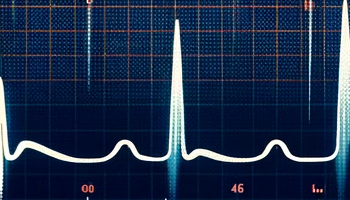Biliary dyskinesia
What’s that?
Biliary dyskinesia is a pathological condition in which the motility of the organ is disturbed.
About the disease
The primary manifestation of a dysfunctional state of the gallbladder is considered to be the appearance of pain in the right subcostal region. The cause of dysfunction can be associated with metabolic disorders, for example, excessive saturation of bile with cholesterol, or have a primary character due to incomplete muscle contraction. Biliary stasis increases the risk of cholelithiasis because bile stasis contributes to its thickening and microcrystal deposition.
In adults and children, functional disorders of the gallbladder are detected with a frequency of 10 to 30%. Women are at risk, and they are more likely to be diagnosed with GI.
The diagnosis of dyskinesia is a diagnosis of exclusion. Laboratory and instrumental examination are aimed at excluding organic causes of pain syndrome.
Treatment of biliary dyskinesia is carried out by conservative methods. It is important to restore the disturbed neurohumoral regulation, control pain, and normalize the contractile activity of the gallbladder.
Types
Taking into account the motor and evacuatory function, the following types of biliary dyskinesia are distinguished:
- hypokinetic – contractile activity is reduced;
- hyperkinetic – contractile activity is enhanced;
- mixed – change of the period of hypomotor activity with the period of hypermotor activity, and vice versa.
Symptoms of biliary dyskinesia
To verify the diagnosis, more than the detection of biliary dyskinesia by instrumental examination is required. The diagnosis is valid only if the person is bothered by abdominal pain and/or dyspepsia. In other words, clinical symptoms should be the reason for examination, not vice versa.
The pain may be combined with other possible symptoms of biliary dyskinesia:
- nausea, vomiting;
- a bitter taste in your mouth;
- irradiation of pain to the back or scapula on the right side;
- provocation of pain with food;
- spontaneous onset of pain during nighttime sleep.
The nature of pain depends on the type of biliary dyskinesia. If there is hypotonic dysfunction, the pain is dull, the equivalent of pain is a feeling of pressure. These symptoms are intensified when changing the body’s position in space and with increasing pressure inside the abdominal cavity, which naturally disrupts the flow of bile from the upper to the lower parts. Hyperkinetic dysfunction is manifested by spastic pain, which can be pretty intense, radiating to the right back, and sometimes to the left, indicating secondary involvement of the pancreatic duct.
Chronic biliary dysfunction is diagnosed based on the following criteria, which are highly likely to rule out other causes of ill health:
- the typical pain syndrome described above;
- absence of organic changes in the hepatobiliary and pancreatic tract according to instrumental diagnostics;
- ALT, AST, bilirubin, amylase/lipase levels in the blood that meet regulatory limits;
- instrumental detection of functional disorder of the biliary tract.
Reasons
The causes of impaired motility are divided into primary and secondary causes. The main factors of primary dysfunction may be the following:
- pathologic state of biliary tract myocytes;
- reduced sensitivity to neurohumoral regulators of the hepatobiliary complex;
- sphincter dysfunction.
Secondary factors of dysfunctional disorders can be:
- inflammatory lesion of the gallbladder wall;
- cholelithiasis, including at the stage of sludge;
- undergone surgical interventions on the stomach, gallbladder, vagus nerve;
- concomitant pathologies of the digestive tract (inflammation of the pancreas, duodenum, gluten intolerance);
- endocrine diseases (diabetes mellitus, hyper- or hypofunction of the thyroid gland);
- pathologies of the nervous system (myasthenia gravis, myopathy);
- gestational period (under the influence of progesterone, which preserves pregnancy and relaxes the smooth muscles of internal organs);
- impaired nutrition;
- sedentary lifestyle.
The basis of gallbladder dysfunction is an imbalance between the interaction between the peripheral organ and its regulatory systems. The nervous system plays the role of regulators, including its autonomous department, hormonal factors, and local biologically active peptides).
Diagnosis
The diagnostic criteria for pain due to biliary dysfunction are:
- localization in the pancreatic region or in the right subcostal region;
- duration of pain for more than half an hour;
- occurrence of painful sensations at least once during the current year;
- constancy of pain sensations (the nature of pain depends on the type of dysfunction).
According to clinical guidelines, screening methods for patients with suspected biliary dysfunction are:
- biochemical blood analysis with determination of hepatic and pancreatic enzyme activity;
- ultrasound scan of the abdominal cavity;
- endoscopic examination of the gastric and duodenal mucosa;
- ultrasound test with cholecystokinin.
Ultrasound scanning is primarily aimed at excluding concrements in the gallbladder. However, ultrasound only sometimes allows the visualization of stones less than 3-5 mm in diameter, and only in some cases is it possible to evaluate in detail the structure of the common bile duct. These two facts limit the diagnostic value of the method.
Standard ultrasound is supplemented with a cholecystokinin test to verify the type of dysfunction. First, the size of the bladder is measured on an empty stomach, and then after taking stimulant drugs or choleretic breakfast, which forces the organ to shrink. A choleretic breakfast can be raw egg yolk in the amount of 2 pieces, vegetable oil (volume of 50 ml), or sorbitol (volume of 200 ml with a mass fraction of substance 0.1).
Treatment of biliary dyskinesia
The main objectives of treatment of functional disorders of the biliary system are improvement of neurohumoral regulatory mechanisms of biliary excretion, elimination of autonomic nervous system dysfunction and pathological reflexes on muscular apparatus of gallbladder and sphincters of biliary ducts, correction of motility and tone of biliary tracts, reduction of visceral hyperalgesia or inflammation (in case of secondary character of dysfunction). Taking into account these circumstances, the main direction in treating this pathology is the administration of selective and non-selective antispasmodics and psychotropic agents that normalize neurohumoral regulation of smooth muscles of the organ.
Conservative treatment
Each patient’s dysfunction treatment is selected individually, considering the existing risk factors and the type of motor disorders. Therapy includes the use of medications and lifestyle modification – adherence to dietary principles, optimization of physical activity, etc. In some cases, surgical treatment may be considered.
The main direction of conservative therapy is antispasmodic. The prescribed drugs allow to control pain and dyspepsia, as well as normalize the outflow of bile and thus prevent the development of potential complications. With biliary dysfunction, antispasmodics have a therapeutic effect on the muscular wall of the organ, as well as the sphincter apparatus. Spasmolytics are divided into two categories:
- neurotropic drugs, which block the transmission of neuromuscular tension;
- myotropic drugs – directly relax the myocyte as it blocks the ion channels that enable muscle contraction.
Spasmolytics are prescribed for a long course to eliminate the pain syndrome.
In addition, a comprehensive treatment program also includes:
- antidepressants, which help at the central level to restore the nervous regulation of the digestive tract organs;
- prokinetics, which help restore the contractile activity of the organ in the mixed type of dysfunction;
- cholekinetics – indicated in hypotonic disorders (they stimulate the production of cholecystokinin, which contracts the smooth muscle of the gallbladder);
- choleretics are indicated in biliary bladder hypertonicity (they increase bile production and affect biliary sphincters, improving bile flow).
Surgical treatment
Sometimes, the question in favor of surgical intervention may be decided. Gallbladder removal may be indicated when the emptying fraction is 40% or less. Patients should be carefully examined before surgery to rule out other causes of dyspepsia and pain.
All these treatment options are available in more than 600 hospitals worldwide (https://doctor.global/results/diseases/biliary-dyskinesia). For example, cholecystectomy can be done in 23 clinics across Turkey for an approximate price of $3.2 K (https://doctor.global/results/asia/turkey/all-cities/all-specializations/procedures/cholecystectomy).
Prevention
Prevention of biliary dyskinesia is based on the following rules:
- an adequate level of physical activity;
- balanced diet;
- timely treatment of concomitant diseases.
Rehabilitation
Dietary nutrition plays a vital role in preventing recurrences of biliary dyskinesia. The main principles of diet therapy are:
- eating 5-6 times during the day – frequent eating has a stimulating effect on the gallbladder and promotes its emptying;
- in the hypermotor type, restriction of foods that contract the gallbladder – vegetable oils, concentrated broths based on vegetables, meat, or poultry;
- vegetable oils and eggs are allowed in moderate amounts, i.e., stimulators of bile outflow.




